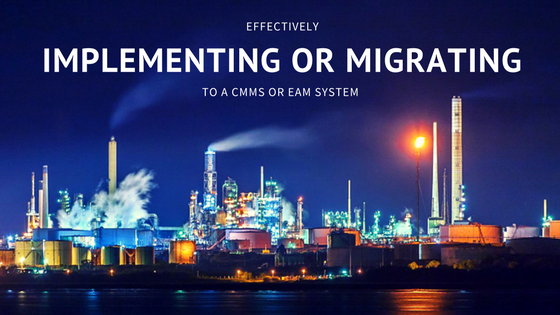When implementing a new CMMS or EAM system, or migrating data to a different CMMS or EAM system, asset-intensive organizations face a special set of challenges. Massive amounts of data are required to properly account for the assets in the system, the parts required to service them, and the maintenance plans, task lists, etc that support the maintenance of all those assets. But managing large amounts of data in an EAM system one object at a time is a monumental task. Handling the data in a spreadsheet is slightly more manageable, but is extremely difficult to measure the accuracy of the data and virtually impossible to manage the relationships between assets and their maintenance data.
The following illustrates three key techniques to more effectively manage maintenance data and implement or migrate to a CMMS or EAM system.
Collaboratively collecting and compiling data from multiple sources
Most asset-intensive companies rely on third-parties to provide some or all of the data they need to load into their EAM or CMMS systems. These third parties include contractors, consultants, manufacturers, and EPCs. Frequently, these groups provide their data in different formats, in many files, and over a long period of time. How do you ensure that the relationships between assets and their maintenance data are correct?
Many companies load the data they have into their new EAM or CMMS system, and only find out that the data is incomplete or inaccurate when a maintenance activity fails. Companies need a way to bring all of the data together in a cohesive set, with tools to help them verify that the data is complete and accurate.
Wouldn’t it make more sense if you could load data from all of your third parties, in a common format, and merge the data, then have an easy way to identify errors or gaps? Use a software solution that will allow you do so.
Getting the asset register right
Does your asset register clearly identify the hierarchy of your facility? Can you confirm that all of the assets are included in your asset register? Are there assets listed that do not belong? It isn’t easy to answer these questions by looking at a spreadsheet, or by reviewing each asset in an EAM system. What about safety-critical assets? Can you tell if all of your critical assets are identified as critical in your EAM system, with the correct criticality value? Be sure to utilize a solution that allows you to easily visualize data issues and ensure all necessary data is as accurate as possible.
Identifying gaps and errors in CMMS data
Companies that require high-quality maintenance to run effectively require high-quality EAM or CMMS data to drive that maintenance. The cost of incorrect data escalates as time progresses in a build or migration project. For example, say you are missing maintenance data, including spare parts, for a piece of equipment on a production line. No maintenance plan means no scheduled maintenance which means no maintenance work order. The equipment is not maintained, and breaks down. The technician is unfamiliar with the equipment, and can’t find the manuals, or the parts catalog. It takes the technician hours to troubleshoot the problem, locate the broken part, determine the correct part number, order the part, wait for delivery, and then replace the faulty part. This is the expensive way to find out you have a data quality problem. What if you could use a software solution to find that problem before you loaded the data into your CMMS or EAM system? Wouldn’t that save you time and money? Be sure to find a solution that allows you to do so.
How Can NRX AssetHub Help?
To see how NRX AssetHub addresses these challenges, and makes it easy for you to answer these questions with a resounding “Yes”, click here
If you would like to find out about this solution or the many other ways NRX AssetHub can help your business, check out the link: https://www.nrx.com/solutions/
Share this article

